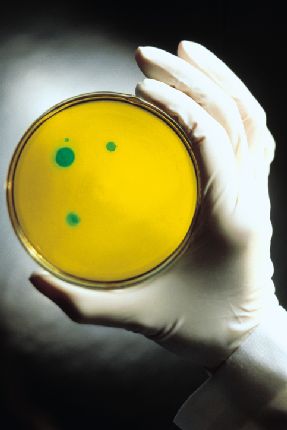Public water system necessary to ensure safe and reliable
water to its customers 24 hours a day, 365 days a year. If
water becomes contaminated, consumers can seriously
patient. Fortunately, the system of water take many steps to
public safe, reliable drinking water. One of the most important steps
is regular testing of water for the bacteria E. coli. What group of bacteria E. coli? Intestinal bacteria are organisms that are present in the environment >> << and in feces of all warm-blooded animals and humans. Intestinal bacteria
is unlikely to cause disease. However, their presence in drinking water
indicates that pathogens (pathogenic)

may be in the water supply system. Most pathogens that can contaminate water
come from human or animal feces. Testing of drinking water
for all possible pathogens is complex, time consuming and expensive
. It is relatively easy and inexpensive to test for intestinal bacteria
. If the bacteria E. coli groups detected in a sample of water, water system operators
work to find the source of contamination and restore safe drinking water
. There are three different groups of bacteria E. coli;
each has a different level of risk. Total E. coli, fecal and intestinal E. coli
Total E. coli, fecal and intestinal
E. coli >> << all indicators of drinking water. General groups of intestinal large collection
different types of bacteria. Fecal coliforms are types
total intestinal who mostly exist in feces. E. coli is a subgroup
fecal bacteria of the intestinal group. When water samples sent to laboratories, it is checked
on the total intestinal bacteria group. If the total intestinal present in the sample also be tested
faecal or intestinal and E. coli, depending on the method
testing laboratory. Total E. coli bacteria are commonly found in the environment
(eg, soil and vegetation) and are usually harmless. If only total
group of bacteria E. coli found in drinking water source are likely
environment. Fecal contamination is unlikely. However, if
pollution can enter the system can be
way for pathogens to enter the system. Thus, it is essential
. find the source and solve the problem. Fecal bacteria Escherichia coli is a subgroup of the total number of intestinal bacteria
They appear in large numbers in the intestines and feces
humans and animals. The presence of fecal intestinal in drinking water sample >> << often indicates recent fecal contamination
E. coli imagine
does strattera dosing not mean that it is dangerous strain is present and in fact, is
probably not. However, it indicates recent fecal contamination >>. << Boiling or treating contaminated drinking water with a disinfectant destroys all
forms of E. coli, including
, O157: H7. What happens if intestinal bacteria is in my water? When E. coli bacteria groups found, water investigation to find
how pollution gets into the water. They collect more,
, or repeat water samples for testing, and often check all >> << system. Taking repeat samples helps determine whether an actual problem exists in
system. If any of repeat samples to detect intestinal bacteria
, the first results are confirmed. What happens if the total koliformnyh bacteria confirmed in my water? If the total confirmed koliformnyh bacteria in drinking water, your water system
should be checked to find and eliminate any possible sources of contamination
. Once the source is defined, it is usually
solved by a system repair, washing and adding chlorine for
short period of time. State Department of Health is working with water
systems and utility managers to help solve such problems. In general
koliformnyh bacteria confirmed in drinking water, water supply or
utility must notify its customers within 30 days of >> situation. << Department of Health recommends that the message is
distributed as soon as possible. The message will inform you of the
taken to remedy the problem when the problem is likely to be
resolved, and that you may need to do so far. What happens if fecal koliformnyh bacteria and E. coli is confirmed
in my water? Confirmation of fecal bacteria koliformnyh and Escherichia coli in
supply system indicates recent fecal contamination that may be of immediate >> << health risk of any water consumption. Responding to health emergencies
Public Health DepartmentHealth
Advisory will be issued within 24 hours to notify all water users that
is a health risk associated with water . In most cases
. use boiled or bottled water is recommended for drinking and cooking >> << messages to inform customers about the steps taken for
fix the problem, and when the problem is likely to be solved .
Department will inspect the system as soon as possible to help
water system to solve this problem. More water samples will be taken
find and eliminate potential sources of contamination and chlorination
and flushing the system is likely to happen. Health Advisory
remain in force until the situation is resolved, and the water
safe to drink. Northwest Regional Office, Kent
Southwest Regional Office, Tumwater
Eastern Regional Office, Spokane.







